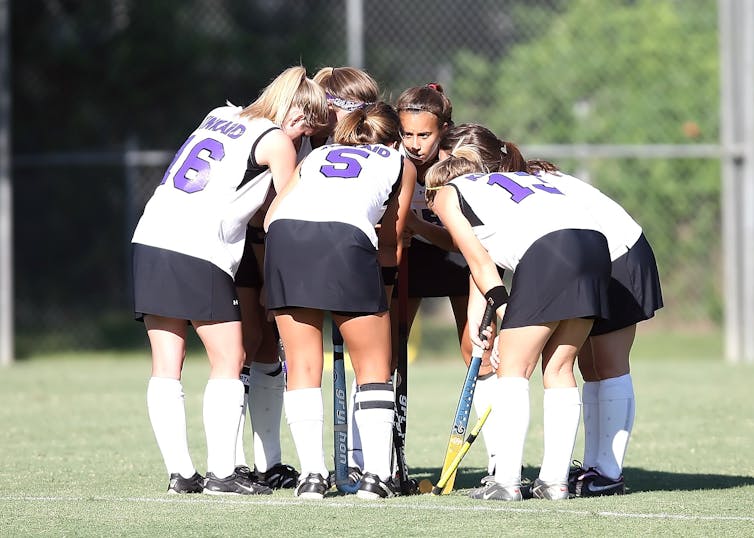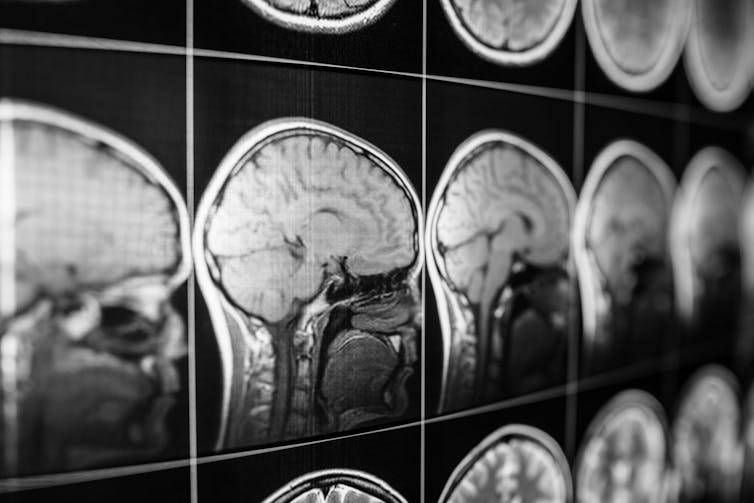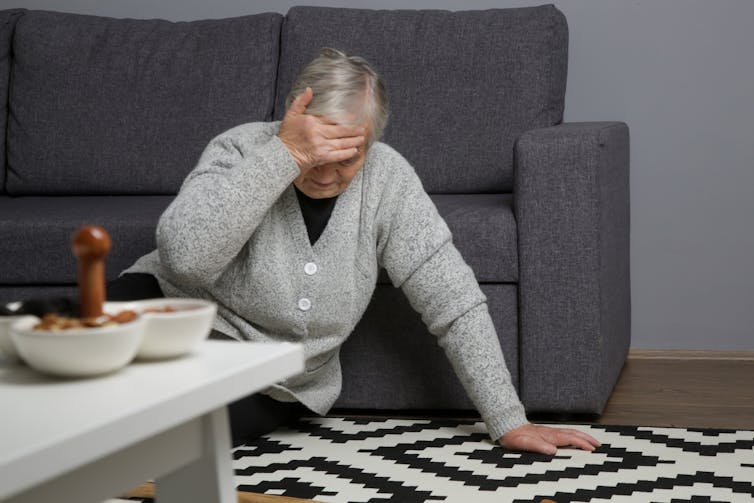
Concussions are becoming more common again as people return to regular activities following COVID-19 lockdowns and restrictions, when concussion rates declined. Each year, about one per cent of Canadians sustain concussions, amounting to some 400,000 concussions in Canada alone. Worldwide, that number grows to over 40 million annually.
Concussion is a critical public health concern. Up to 30 per cent of children and adults will have persistent problems after concussion that lower their quality of life and hinder their return to work, sport, school and other activities.
Prevention, diagnosis and treatment
Important questions remain about concussion prevention, diagnosis and treatment. In 2019, the Parliamentary Subcommittee on Sports-Related Concussions in Canada called for the creation of a national expert group and a coordinated national research program.
In response, the Canadian Concussion Network/Réseau Canadien des Commotions (CCN-RCC) was launched in 2020 to establish a Canadian research agenda spanning all causes of concussions, as well as to support knowledge translation to bring research evidence into clinical practice where it can improve patient care.
We are all members of the CCN-RCC Executive Committee or Advisory Council. We include a neuropsychologist, neurosurgeon and neuroscientist. We are all active researchers whose interests reflect the broader concussion research community in Canada, and two of us are also clinicians. Some recent advances in Canadian concussion research — including who is affected by concussions — may come as a surprise to readers.
Who gets concussions?

Concussion doesn’t just happen in sport or only in teens and young adults; it affects people of all ages and backgrounds. Young children and older adults often sustain concussions in falls. Recently, intimate partner violence has been identified as a common cause of concussion, with traumatic brain injury (TBI) occurring in up to 80 per cent of survivors, mostly women.
Concussion and TBI are also extremely common among individuals experiencing homelessness. About 35 per cent of study subjects experiencing homelessness reported a head injury with TBI symptoms.
More research on concussion is needed among systemically disadvantaged groups, especially Indigenous people, who experience higher rates of injury. Building on Canada’s many advances in sport-related concussion research, we now need to ask how we can better prevent, diagnose and treat all concussions.
Preventing sport-related concussion
The best concussion is one that never happens. Prevention of sport-related concussion is a key focus of Canadian concussion research. When body checking was shown to increase the risk of concussion in youth hockey, policy changes disallowing body checking for players under 13 resulted in a reduction of over 4,500 concussions annually.
Recently, one of the largest studies of mouthguards to date found they likely prevent concussions in youth ice hockey. This evidence will interest parents concerned about their children playing contact sports and may encourage sporting organizations to institute policies requiring mouthguards.

More broadly, Parachute, the largest charitable organization in Canada devoted to injury prevention, is leading the Concussion Harmonization Project, supported by the Public Health Agency of Canada and in collaboration with Sport Canada. The project’s goal is to establish consistent concussion guidelines and protocols in more than 50 sports in Canada based on the Canadian Guideline on Concussion in Sport, which is grounded in scientific evidence.
Diagnosing concussion with biomarkers
Concussions are not usually visible using standard neuroimaging diagnostic tools, such as CT scans. The diagnosis of concussion relies largely on the observation of signs such as unconsciousness or vomiting and the reporting of symptoms such as headache, dizziness or “brain fog.”
However, injuries are not always directly observed, and people cannot or do not always report their symptoms accurately. Canadian researchers are studying biomarkers of concussion — using biofluids like saliva or blood, or advanced neuroimaging — that may eventually be used on the sideline or in the emergency room to identify concussion more accurately.

In collaboration with Statistics Canada, age-based reference intervals for blood-based biomarkers are being developed that could be applied in concussion diagnosis across the lifespan.
Predicting concussion outcomes
When a child sustains a concussion, parents want to know their prognosis and how long their recovery will take. Although most children recover in two to four weeks, some show more prolonged symptoms.
Researchers have developed a clinical prediction rule for children and adolescents that can be used to tell families the likelihood of persistent symptoms. Physicians can reassure parents of children who are at low risk and target help for those with higher risk, based on easily accessible information.
Promoting recovery from concussion

People with concussion used to be told to rest in a dark room until their symptoms stopped. However, we now know resting more than one or two days can slow recovery.
Instead, early reintroduction of activity, and even low-intensity exercise, can promote recovery and reduce persistent symptoms.
Researchers are also developing effective, targeted treatments for persistent symptoms. For instance, cognitive behavioral therapy for insomnia is very effective at reducing the sleep problems that often happen after concussion.
Concussion Awareness Week
In 2013, high school rugby player Rowan Stringer tragically died after incurring multiple concussions in rugby over six days. Rowan’s death prompted the passage of Rowan’s Law in Ontario, the only concussion legislation to date in Canada (by comparison, all 50 U.S. states have passed concussion legislation).
Rowan’s death was an impetus for the creation of the Parliamentary Subcommittee on Sports-Related Concussions in Canada. One of the Subcommittee’s recommendations was to establish a pan-Canadian Concussion Awareness Week, which began in 2021 and takes place this year from Sept. 25 to Oct. 1.
We wanted to make Canadians aware that Canadian researchers are conducting innovative research to reduce concussion, improve its identification and diagnosis, and find better treatments. Promoting the translation of that research into more evidence-informed practices and policies, nationally and internationally, is a crucial next step.
Keith Yeates receives funding from Canadian Institutes of Health Research, and has had recent funding from Brain Canada and Alberta Health Services. He also receives an editorial stipend from the American Psychological Association.
Cheryl Wellington receives funding from Canadian Institutes of Health Research, Weston Brain Institute, Department of Defence, National Institutes of Health.
Charles H. Tator does not work for, consult, own shares in or receive funding from any company or organisation that would benefit from this article, and has disclosed no relevant affiliations beyond their academic appointment.
This article was originally published on The Conversation. Read the original article.







